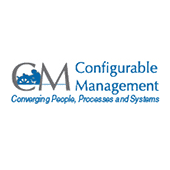SAP BAPI
Filter By
Browse By
- SAP Analytics and AI
- SAP Application Development and Integration
- All SAP Application Development and Integration
- SAP ABAP
- SAP ABAP Development Tools
- SAP ABAP Test Cockpit
- SAP API Management
- SAP BAPI
- SAP Basis
- SAP BRF
- SAP Business Application Studio
- SAP CMS
- SAP Design Studio
- SAP Development Tools
- SAP DevOps
- SAP EAI
- SAP EDI
- SAP Extension Suite
- SAP Fiori
- SAP Fiori Elements
- SAP Integration Suite
- SAP Low Code Application Development
- SAP Low Code Automation
- SAP Netweaver
- SAP Release Management
- SAP UI5
- SAP Web Application Server
- SAP Web IDE
- SAP Business Process Management
- SAP Center of Excellence
- SAP CIO
- SAP Customer Experience
- SAP Data and Data Management
- All SAP Data and Data Management
- SAP BW
- SAP BW/4HANA
- SAP Crystal Reports
- SAP Data Archiving
- SAP Data Center
- SAP Data Governance
- SAP Data Integration
- SAP Data Migration
- SAP Data Quality
- SAP Data Services
- SAP Data Strategy
- SAP Data Visualization
- SAP Data Warehouse Cloud
- SAP DMS
- SAP Document Control
- SAP EIM
- SAP ETL
- SAP ETL Tools
- SAP HANA
- SAP HANA Administration
- SAP HANA Deployment Infrastructure
- SAP HANA Studio
- SAP Master Data
- SAP Master Data Governance
- SAP MDM
- SAP Enterprise Architect
- SAP Enterprise Asset Management
- SAP ERP
- SAP Finance
- All SAP Finance
- SAP Accounting
- SAP AR AP
- SAP Asset Accounting
- SAP Billing Systems
- SAP BPC
- SAP BRIM
- SAP Cash Management
- SAP Central Finance
- SAP Controlling
- SAP COPA
- SAP Cost Center Accounting
- SAP Currency Risk
- SAP e-invoicing
- SAP FICO
- SAP Finance Automation
- SAP Advanced Financial Closing
- SAP Financial Consolidation
- SAP Financial Planning
- SAP FX Risk
- SAP General Ledger
- SAP Global Tax Management
- SAP Hyperion
- SAP Order to Cash
- SAP Payment Processing
- SAP Profitability Analysis
- SAP Rebate Management
- SAP S/4HANA Finance
- SAP SWIFT Compliance
- SAP Treasury Management
- SAP Universal Journal
- SAP Governance Risk and Compliance
- SAP Human Capital Management
- SAP Intelligent Technologies
- SAP Platform and Technology
- All SAP Platform and Technology
- SAP Business Technology Platform
- SAP Cloud
- SAP Cloud Connector
- SAP Cloud Integration Platform
- SAP Cloud Migration
- SAP Cloud Platform
- SAP Cloud Providers
- SAP Cloud Strategy
- SAP Digital Signature
- SAP Container Platform
- SAP HANA Enterprise Cloud
- SAP Digital Asset Management
- SAP Smart Forms
- SAP HEC
- SAP Digital Integration Hub
- SAP Hyperscalers
- SAP Infrastructure
- SAP Messaging
- SAP Quality and Testing
- SAP Security
- SAP Spend Management
- SAP Supply Chain Management
- All SAP Supply Chain Management
- SAP APO
- SAP Asset Management
- SAP Business Network
- SAP Digital Manufacturing Cloud
- SAP Digital Twin
- SAP EWM
- SAP IBP
- SAP Inventory Management
- SAP Label Printing
- SAP Logistics
- SAP Manufacturing
- SAP Manufacturing Automation
- SAP MES
- SAP MII
- SAP MM
- SAP MRO
- SAP MRP
- SAP Order Management
- SAP Plant Maintenance
- SAP PLM
- SAP Production Planning
- SAP S&OP
- SAP SD
- SAP SPM
- SAP Supply Chain Planning
- SAP Track and Trace
- SAP Transportation Management
- SAP System Administration
SAP BAPI, a Tested Way to Integrate with SAP
Interoperability of software applications has become a critical requirement for business processes ever since SAP evolved from being a monolith to becoming the central core of an increasing number of third-party solutions. Many top vendors for specialized business applications offer ways for their software to work in tandem with SAP ECC and SAP Business Suite.
SAP itself has enabled this through its SAP Business Application Programming Interfaces (SAP BAPIs). These are standard interfaces that enable software vendors to integrate their software into SAP Business Suite. In programming terms, a standard BAPI is a Business Object type that encapsulates a set of methods and parameters, with an a “Extension” parameter to pass custom data that is specific to a company. For example, standard BAPI for purchase orders and sales orders can be enhanced.
SAP BAPI, a Tested Way to Integrate with SAP
Interoperability of software applications has become a critical requirement for business processes ever since SAP evolved from being a monolith to becoming the central core of an increasing number of third-party solutions. Many top vendors for specialized business applications offer ways for their software to work in tandem with SAP ECC and SAP Business Suite.
SAP itself has enabled this through its SAP Business Application Programming Interfaces (SAP BAPIs). These are standard interfaces that enable software vendors to integrate their software into SAP Business Suite. In programming terms, a standard BAPI is a Business Object type that encapsulates a set of methods and parameters, with an a “Extension” parameter to pass custom data that is specific to a company. For example, standard BAPI for purchase orders and sales orders can be enhanced.
BAPI Technical Implementation
BAPIs are technically implemented using RFC (Remote Function Call) enabled function modules inside SAP systems. Such a trusted RFC connection allows creation of trusted-trusting relationships between systems, both SAP and non-SAP. BAPIs also can be called through ALE/IDoc (Application Link Enabling/Intermediate Document) technology.
BAPI Integration and SAP Workflow Examples
BAPIs are defined in the Business Object Repository (BOR) as methods of SAP Business Objects that perform specific business tasks. They allow integration at the business level, not technical level. This makes it much easier to find suitable BAPIs compared to non-BAPI-based function modules.
There are different ways in which application developers may integrate workflows:
- Integration of third-party applications with an SAP System.
- Integration of custom business applications with an SAP System.
- Integration of additional SAP components into the SAP system.
- New user interfaces to an SAP System for occasional SAP users.
- Web-based access to an SAP System through Internet or Intranet applications.
- Mobile, cloud or IoT (Internet of Things) access to an SAP system.
Here is one example of how SAP BAPI is used for reporting.
SAP BAPI and the Move to SAP S/4HANA
As many SAP customers move to SAP S/4HANA in the cloud, one of the most vital requirements is to integrate existing or new on-premise applications with SAP S/4HANA. Released BAPIs can be used to connect SAP S/4HANA Cloud with SAP on-premise applications only.
BAPI and Non-SAP Integrations
For other integrations, such as cloud-to-cloud and cloud with non-SAP solutions, SAP recommends using Public APIs which use OData (Open Data Protocol) or SOAP (Simple Object Access Protocol), Business event handling and other SAP Cloud products.
There are many sophisticated ways that SAP solutions can be integrated with other applications. Boomi has an intelligent iPaas (Integration Platform as a Service) with many connectors that seamlessly integrate workflows.
While SAP BAPI has many advantages, SAP customers have to assess the right set of intelligent approaches for their landscape based on their needs.
183 results
-

- SAP S/4HANA Implementation
 Premium
Premium
Tips to Attain Faster Stabilization with S/4HANA Production Execution Implementation
Reading time: 8 mins
Most S/4 implementations could expect a period of stabilization before all users adapt to the new system. While this may vary widely across S/4HANA implementations due to industry, process complexities, and organization culture, among other things, everyone can gain tips from another company’s implementations journey. An effective and efficient people and process design is critical…
-

 Premium
Premium
Integrating the Inbound Process with Packing across ECC, SNC, and EWM
Reading time: 12 mins
Learn about an enhancement in SAP Supply Network Collaboration (SNC) that performs the automatic packing of products. It is done at the time of advanced shipping notification (ASN) creation by the supplier through a file upload and is based on specifications defined in the system. Key Concept Packing the goods into handling units is an...…
-

 Premium
Premium
Move Plan Data from BW/SEM to R/3 Using Retractors
Reading time: 36 mins
By transferring plan data back to R/3, you can perform tasks such as comparing plan to actual data and budget control. The ability to extract data from SAP R/3 and legacy systems into BW for analysis and planning via SEM-BPS (Strategic Enterprise Management-Business Planning and Simulation) has been available for several years. Now you can...…
-
-

 Premium
Premium
A Beginner’s Guide to Accessing BAPIs with the SAP DCOM Connector
Reading time: 2 mins
This article will introduce you to the basic design principles behind SAP DCOM Connector (SDC), show you how to build BAPI-enabled applications with SDC in Visual Basic, and discuss some advanced concepts for SDC-based applications. In order to keep things simple, we will assume that our applications are built without MTS. So I will not...…
-

- SAP Web Application Server
 Premium
Premium
Calling BAPIs from the SAP Web Application Server
Reading time: 1 mins
With the SAP Web Application Server 6.10, you can build state-of-the-art web applications in ABAP. Some of the web applications that you want to build will be unrelated to the SAP application components, but in many cases you will need some access to the SAP application functionality. This article shows you, step-by-step, how to find...…
-

 Premium
Premium
Enhance ABAP Business Objects Without Modification
Reading time: 7 mins
Enhance standard business objects so that you can customize them to your requirements without creating new business objects or modifying the standard business object. You can develop the standard business object’s method to fulfill additional requirements such as adding related standard or custom fields. Key Concept A business object is the interpretation of a real-time...…
-

- SAP MII
 Premium
Premium
How to Integrate Enterprise Systems and an MES Using SAP MII
Reading time: 31 mins
Learn how to develop a composite application in SAP Manufacturing Integration and Intelligence (SAP MII) by mashing up data from ERP and a manufacturing execution system (MES). See how to leverage message services and business logic services for ERP and MES integration. Key Concept The information required for manufacturing execution may come from different systems...…
-
-

 Premium
Premium
SAP R/3 and SAP ERP Offer New Stock Transport Orders Features
Reading time: 27 mins
Find out what is new with stock transport orders in SAP R/3 4.7 and SAP ERP. The new and enhanced features enable stock transport orders in more business scenarios and reduce the amount of required data maintenance. Key Concept Companies use stock transport orders (STOs) to transfer inventory between two network sites. SAP ERP manages...…
-

SAP S/4HANA Finance 1610
Reading time: 10 mins
SAP S/4HANA Finance 1610 provides users with the flexibility of using two main currencies plus eight freely definable currencies. The translation of the user-defined currencies, whether real time or not, is based on the currency configuration completed after executing transaction code FINSC_LEDGER. The eight freely definable currencies allowed by SAP S/4HANA Finance 1610 are available…
-

 Premium
Premium
Gain Error-Free Data Capture with PI Sheet Functionality
Reading time: 24 mins
Learn about Process Instruction (PI) sheet functionality in SAP ERP Central Component 6.0 for the Production Planning-Process Industry (PP-PI). Get some tips and tricks on the use of PI sheets in error-free manufacturing data capture. Key Concept SAP ERP Central Component (SAP ECC) provides Process Instruction (PI) sheets as part of the Production Planning-Process Industry...…
Become a Member
Unlimited access to thousands of resources for SAP-specific expertise that can only be found here.
Become a Partner
Access exclusive SAP insights, expert marketing strategies, and high-value services including research reports, webinars, and buyers' guides, all designed to boost your campaign ROI by up to 50% within the SAP ecosystem.
Upcoming Events
Related Vendors
Your request has been successfully sent


